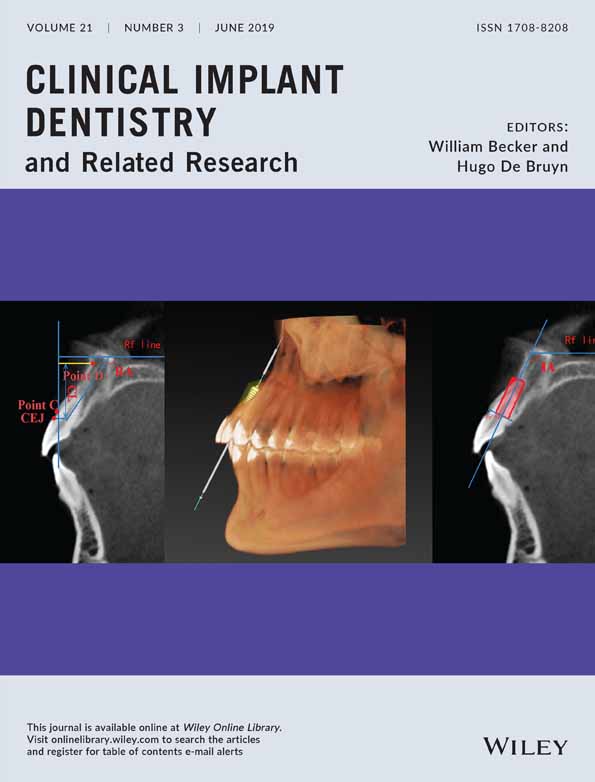Retrospective study on the clinical outcomes of small-diameter implants supporting fixed prostheses without bone augmentation in the posterior region after 2 to 12 years
Funding information National Natural Science Foundation of China, Grant/Award Numbers: 81401774, 31670970, 81470780; Medical and health technology projects of Zhejiang Province, China, Grant/Award Number: 2015107891
Abstract
Background
Small-diameter implants (SDIs: diameter <3.5 mm) are often chosen as an alternative to bone augmentation in clinical practice, but the scientific evidence regarding SDI application in the posterior area remains deficient.
Purpose
To evaluate the clinical and radiographic outcomes of SDIs supporting fixed prostheses without bone augmentation in the posterior region, and to analyze the potential influencing factors related to SDI failures.
Materials and Methods
Clinical and radiographic data of 243 SDIs in 156 patients were retrospectively assembled after 2 to 12 (mean 4.75) years of follow-up. Implant and prosthesis failures, mechanical and biological complications, and radiographic marginal bone loss (MBL) were evaluated. The influence of patient/implant characteristics and prosthetic design on SDI failures was investigated.
Results
Five implants in five patients failed, contributing to 10-year cumulative survival rates of 97.9% on an implant-based analysis and 96.8% on a patient-based analysis. Biological complications and mechanical complications were detected in 22 (9.1%) and 31 (12.8%) of implants, respectively. No implant fracture was detected. Peri-implant MBL during 10 years was 0.60 ± 0.90 mm on average. The implant type (bone-level or tissue-level) was the only factor that significantly influenced SDI failures.
Conclusion
SDIs supporting fixed prostheses in the posterior region achieved predictable long-term clinical outcomes. However, tissue-level titanium SDIs should be avoided where possible.
CONFLICT OF INTEREST
The authors declare that no conflict of interest exists in relation to this project.




